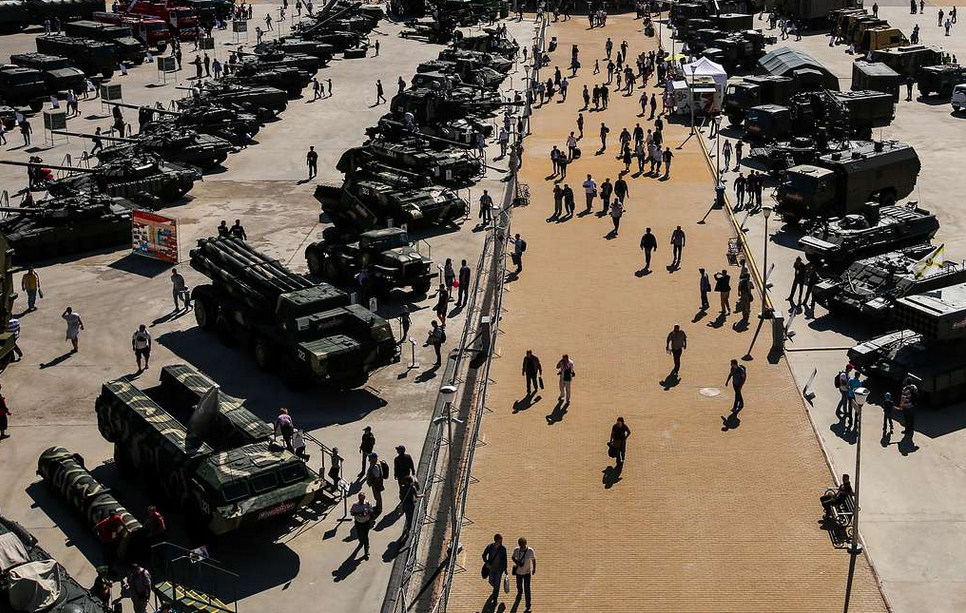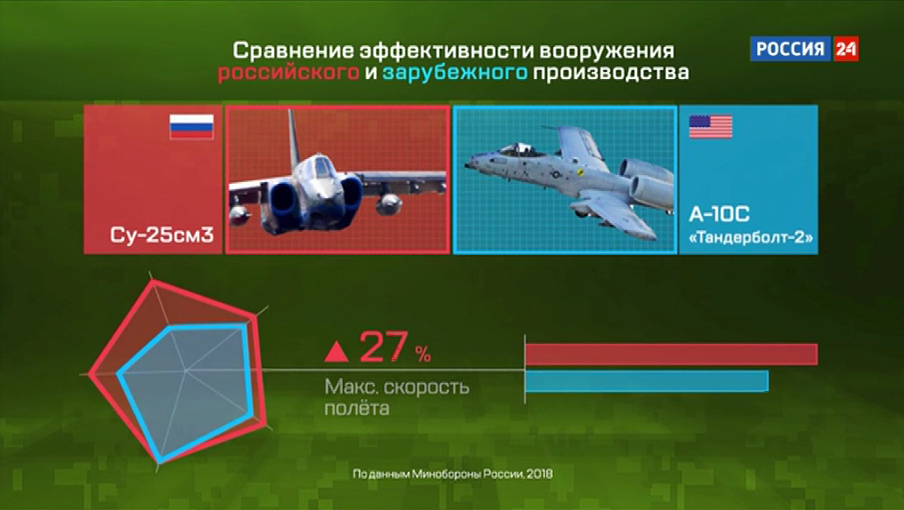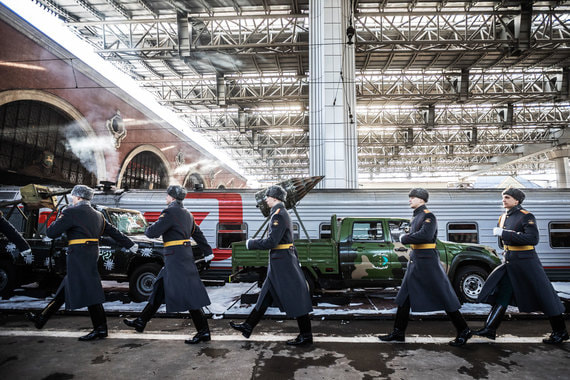
Moscow exhibition of captured weapons seized by the Russian military in Syria.
This year as always on February 23, Russians celebrated “Defender of the Fatherland Day.”
It is a public holiday, a day off for the general population, schools and most businesses are closed.
Many Russians observe February 23 as Men’s Day because military service is obligatory for most men in Russia. Women often give presents and postcards to their male relatives, including those who never served in the military. On a workday before or after the holiday, many women also congratulate their male colleagues and schoolboys may receive small presents from their female classmates.
But mostly the celebration of Defender of the Fatherland Day focuses on the achievements of military forces and veterans.
This year the achievements of the Russian military forces are in the center of the media attention.
For many days Russia 24, the only Russian TV news channel and broadcasting 24 hours a day, broadcasts videos showing the technical superiority of all kinds of Russian Military equipment during commercial breaks.

Screenshot showing 27% superiority of maximum speed of Russian over American aircraft.
On August 24, an exhibition called the “Syrian Breakthrough”, was opened in Moscow. It features weapons captured by the Russian military in Syria.
Exhibits included ammunition, firearms, a T-55 tank, pickups installed with mortars and other weapons, armored cars, infantry fighting vehicles, suicide Jihadmobiles (a Jeep Grand Cherokee) with explosives removed.
There was military equipment produced from many countries, but not from Russia. The visitors of the exhibition were given the impression that the entire World had supported the Syrian terrorists, who were “finally defeated by Russia” with Russian weapons.
Military personnel, participants of the Russian operation in Syria, served as the exhibition guides.
54,400 visitors attended the exhibition.

On February 23, a train carried the exhibition’s showpieces departed from Moscow. The exhibition of the Ministry of Defense will travel over 28,500 kilometers along the route. The train will make stops in 60 Russian cities, including Sevastopol in annexed Crimea, Vladivostok, Murmansk. It will finish its journey in the armed forces Patriot Park near Moscow on April 27, Syria’s independence day.
The most notable event of this February 23 celebration became the performance of St. Petersburg Chamber Choir in St. Isaac’s Cathedral (the main cathedral of St. Petersburg). The Choir sang a song about a Russian nuclear submarine that is preparing to strike at Washington, DC. On the evening of February 25, the record of the performance went viral in social networks. The full recording of the performance was posted on the official channel of the St. Petersburg choir on YouTube, but in the afternoon of February 26 it was removed. Nevertheless, lots of other YouTube channels immediately picked up the video.
https://www.youtube.com/watch?v=iaFCudA8M3Q
Here is the translation of the beginning of the song:
“We had crossed the Atlantic on a little submarine with atomic engine,
carrying a dozen little bombs, a hundred megatons each.
I call the gunner:
‘Aim, Petrov, at the city of Washington, DC!’
Tru-la-la, tru-la-la,
There is no limit to what I can do for three rubles!”
As copies of the video spread over the Internet, becoming the main sensation of the Defender of the Fatherland Day, journalists discovered that the song was written in 1979 or 1980.
The author of the song “On a submarine, or the salary of military personnel” (the three rubles was a regular monthly salary of the Russian military man back then) is a blues musician, a former member of the band “Petrovich Band” Andrei Kozlovsky. Commenting on the unexpected resurrection of his song, Kozlovsky said to BBC correspondent that the song was written by him while studying at the military department of the Leningrad Forestry Academy.
“Back then I’ve got more than my fair share of problems for this humorous song. And it turns out that I am criticized for this song a second time! The first time was because this satirical song was making fun of the official propaganda, and now it is perceived as a serious propaganda!
“It was a joke. We paraded to the beer stall, with machine guns, and sang ‘Tru-la-la, tru-la-la, there is no limit to what I can do for three rubles!”
– that’s all,” Kozlovsky recalls.
The choir leader Vladimir Begletsov responding to the BBC expressed the same view: it was a joke without any political context.
“Sorry, we are not engaged in politics. The song is comic and does not contain any appeals. The audience applauded while standing.”
Nevertheless, the song keeps spreading through the Internet in large part without explanations. The singers’ faces are serious and the church atmosphere is solemn. According to many comments, most of the audiences take the song as a serious contemporary piece of propaganda.

